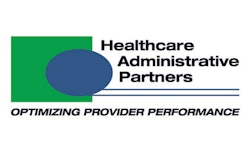
If you currently outsource your revenue cycle management, you know that the performance of your billing company is paramount to your practice's financial success. Reimbursement continues to decline, and the migration to value-based payments from fee for service will continue to jeopardize your practice's finances if your revenue cycle partner isn't performing.
So what does it take for optimal performance, and how do you know if you're getting it? Are you collecting every dollar you can (from the patient and the payors)?
One of the biggest issues with a private hospital-based group is the lack of comparison data. There are a number of pertinent questions:
- What should your yield per procedure be?
- When you're comparing your practice reimbursement rates with those of other groups, are you comparing apples to apples?
- How about days in accounts receivable (AR)? How quickly should you receive your money?
- How does your payor mix and/or bad debt affect those numbers?
- How soon is too soon to send a patient to collection?
All of these metrics (key performance indicators, or KPIs) are important to measure but difficult to apply when analyzing your current outsourced billing company's performance. A thorough evaluation of the five critical revenue cycle KPIs below will help you glean the necessary information about your current billing vendor and help you make the decision as to whether you should look at alternatives for your practice:
- Charge capture. You can't measure what you can't count. A charge capture audit (done correctly) is a manual process, but one that will be worth your time. Go back 120 days from the current date and compare the log of patients from each of your locations with the patients billed. Have you accounted for every procedure for every patient who was registered? In most cases you will find missed procedures. This can be due to an interface problem or an issue with a manual paper process. Tightening up the charge capture process is the first step in reducing revenue leakage. If you are completing procedures that never enter the billing system, then you are working for free. Ongoing charge capture spot checking is a good practice to employ, and in most cases there is always room for improvement.
- Documentation quality. You can't code for what you don't document. A review of your documentation is critical to ensuring that you are coding compliantly and appropriately for services rendered by your physicians. It is also very important to standardize documentation through templates whenever possible. Such standardization can help ensure quality control in your end product, which is the final dictated report. It is important to understand that documentation analysis is not the same as a coding audit. When we talk about documentation review, we are talking about standardization of templates and the reference of appropriate attestations that are a necessary part of compliant dictation. For example: Are you documenting whether or not you reviewed prior scans?
- Coding accuracy. Is your current billing company using an autocoder? Does it use offshore resources? How often does it audit its coders and/or process, and how often should you? Once you have documented for physician services rendered at your practice, you need to ensure that the appropriate codes are assigned to allow for maximum reimbursement. Undercoding is just as noncompliant as overcoding. A thorough analysis across modalities, locations, payors, and physicians is crucial to ensuring that your coding accuracy is sufficient. An acceptable accuracy rate is 97%. Anything less and you should be looking for a plan to implement improvement.
- Payor contract management. Once you have ensured that your work is being captured, documented correctly, and coded accurately, now you need to make sure you are being paid in line with your negotiated payor-specific fee schedule. Do you have your payor contracts and have you shared them with your vendor? If not, this is a critical step. Your billing company needs to know what you have contracted so it can be sure that you are being reimbursed correctly. What process does your billing company's system use to monitor underpayment? Choose three of your top nongovernmental payors and compare the most common current procedural terminology (CPT) contracted rates with reimbursement at the patient level to understand where any deltas may occur.
- Denial management. You should expect that roughly 80% of your expected collections will come in every month if your billing company employs a thorough, continually refined operational process. The performance difference is in the additional 20%. A thorough denial management process is crucial to ensuring full and timely reimbursement. How does your vendor mange denials and how does it report on them to you? Can you analyze denials down to the patient and CPT level? Can you easily evaluate denial trends by denial code/reason? Once analyzed, what process improvement does your vendor employ to reduce these denial trends? Denial management is the heart of billing company performance.
Summary
These five critical revenue cycle management KPIs are bedrock metrics that will help ensure your practice and your physicians are being properly served by your outsourced billing vendor. Consider these a baseline starting point. There is more, much more, involved in truly maximizing practice reimbursements and reducing compliance risk in today's changing healthcare economy.
As value-based provider compensation transitions from concept to reality, working with an average billing and coding company, or relying on internal staff to handle these complexities, becomes ever-more challenging. Modern physician practices are partnering with full-service revenue cycle management vendors that are experts in areas such as the Medicare Access and CHIP Reauthorization Act (MACRA) and the Merit-Based Incentive Payment System (MIPS) and innovating in clinical analytics applications to drive better decision-making, improved patient outcomes, and increased practice value. It's time to ask your revenue cycle management company how it stacks up in these areas.
Rebecca Farrington serves as chief revenue officer for Healthcare Administrative Partners. She has more than 20 years of experience in healthcare sales and management roles, focusing on hospital-based and physician revenue cycle management.
The comments and observations expressed herein are those of the author and do not necessarily reflect the opinions of AuntMinnie.com.



















